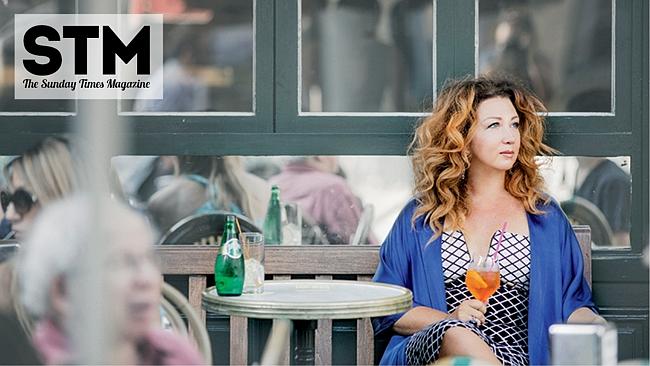Let them cook cake in Paris
ATTENDING culinary classes in Paris is a great way to overcome kitchen incompetence and keep your friends on side, writes Garry Marchant.

PERHAPS it is my limited repertoire of chilli con carne and baked beans, but friends usually do not accept a second invitation to dine at my place.
Yet because I live in Paris, one of the world's main centres of culinary excellence, it strikes me I should go back to school: cooking school, that is.
The newish L'Atelier des Chefs (Chefs' Workshop), with several branches in Paris and a range of courses, seems the most user-friendly of the many outlets offering culinary tuition in this city.
So I sign on for its most basic class – a midday half-hour lesson – to learn to prepare a simple meal. On the day of my lesson, this turns out to be saltimbocca de veau (veal with prosciutto and sage) and cocotte d'artichauts (pot of artichokes).
Donning aprons, we pupils enter the bright, spacious kitchen, taking our places at one of four tables. Our teacher, Alexandre Luccioni, is a young Corsican with that annoyingly slim build of so many professional chefs.
We start by cutting tiny new potatoes into wedges, then skin and cut a green onion. So far, I can handle this. Next we attack the artichokes, pulling off the leaves and chopping the edible parts into small pieces. It is easier than I thought and reverses my lifelong prejudice against this tricky vegetable. During the class no English is spoken but Luccioni demonstrates everything so it is easy enough to follow.
Fellow student Connally Burchett, a tourist from Houston, Texas, says not knowing the language isn't a problem. "I don't understand what he's saying, but I can see what he's doing and can copy the others," she says.
We slice a large chunk of Parma ham into three pieces, place each slice on a thin strip of veal, top it with half a sage leaf and roll it up, securing everything with a bamboo toothpick. Lively chatter animates the kitchen.
Preparation done, we move to the gas stoves. Luccioni puts a sizeable chunk of butter in each of four flat-bottomed woks, we add the artichoke and green onions, stir fry, then add the potatoes and a glass of water and cover the pan. Now we brown the veal rolls in hot oil in a frying pan, turn them and add a glass of white wine.
The chef rushes around checking each of the four stoves, adjusting the heat, adding water to a pot, stirring vegetables. It seems frenetic, but we're told this is the normal speed for a restaurant kitchen. That explains the slim physiques of so many chefs.
Within half an hour everything is ready and we sit down to eat our masterpiece at a long table. It is delicious.
"It's a great idea," says Burchett, slicing into the rolled veal. "In 30 minutes you learn something good. This is the most fun I have had since I've been in Paris. I'll come back."
This lesson complete, I decide to try another class at the same school. This time it's a 90-minute lesson on preparing a three-course meal. The chef for this course, Phillipe Kratz, who previously worked at Paris's Ritz Hotel, waits at one of the tables with ingredients ready for our meal of a savoury tart, chicken with tarragon, and apple crumble. Each table is laden with large bowls of tomatoes and mushrooms, five small flat discs of pastry (one for each student), and a plate of raw chicken pieces topped with tarragon leaves.
We prepare the dessert first, peeling and slicing the apples, cutting a long vanilla pod in half lengthwise and scraping out the centre to add to the sliced apples. As we make the crumbles and the kitchen smells as heavenly as a bakery.
Meanwhile, there's the tart to produce. We learn how to peel tomatoes and mushrooms before placing the sliced mushrooms on the prepared pastry, drizzling them with olive oil, adding the tomatoes, salt and freshly ground pepper. The tarts are topped with thyme and a laurel leaf. Perhaps because of the range of food we have to cook, this lesson seems more intense, less chatty than the other.
Next up, the main course. We slip tarragon leaves under chicken skin and fry the meat in a pan with olive oil, skin side down, on a high heat. Potatoes go into another pan with butter. We grind pepper on both dishes, turn the chicken, lower the heat and add a glass of white wine. Finally comes a dressing: fresh basil goes in a blender with olive oil, water and salt. Suddenly, everything comes together and our three-course meal is ready, a wondrous sight, everything perfectly prepared, the
aromas sublime, the flavours exquisite.
But now comes the test. Friends who have suffered through my chilli and baked beans are invited to my place for dinner. I serve them tarte fine (tomato tart), supreme de volaille au citron vert with pommes grenaille (chicken with tarragon and potatoes) and pomme et amande, noix de pecan au caramel (more humbly known as apple crumble). The meal eaten, they agree to come back to my place to dine any time.



